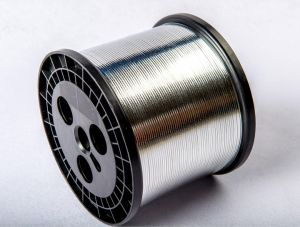How to Assess the Quality of PV Ribbon from Different Manufacturers
Solar energy has emerged as a pivotal player in the quest for sustainable power sources. Photovoltaic (PV) modules play a crucial role in harnessing solar energy, and within these modules, the PV ribbon is a small yet critical component. PV ribbon, also known as tabbing ribbon or bus ribbon, connects solar cells within the module, facilitating the flow of electricity. When it comes to choosing a Leading PV Ribbon Manufacturer for your solar installation, assessing the quality from different manufacturers becomes essential. In this guide, we will explore the key factors to consider in evaluating the quality of PV ribbon.
1. Material Composition
The first step in evaluating PV ribbon quality is to delve into its material composition. High-quality PV ribbon is typically made from copper, aluminum, or a combination of both. Copper is a preferred choice due to its excellent electrical conductivity and corrosion resistance. Ensure that the manufacturer specifies the material composition clearly, and opt for ribbon with a high purity level, as this directly impacts the overall performance and longevity of the solar module.
2. Conductivity and Resistance
The primary function of PV ribbon is to conduct electricity efficiently. Therefore, assessing its electrical conductivity and resistance is paramount. Look for ribbons that boast low resistance levels and high conductivity, as these factors contribute to minimizing energy losses within the solar module. Manufacturers often provide technical specifications, including resistance values, which can be instrumental in comparing different options.
3. Width and Thickness
The dimensions of the PV ribbon, specifically its width and thickness, influence its mechanical and electrical properties. Thicker ribbons generally offer better mechanical strength, enhancing durability and resistance to environmental stressors. However, a balance must be struck, as excessively thick ribbons may hinder flexibility and increase shading, potentially reducing the overall efficiency of the solar module. Manufacturers usually provide recommendations for the optimal width and thickness based on the specific application and module design.
4. Tensile Strength and Flexibility
PV ribbons are subjected to various mechanical stresses during the installation and operation of solar modules. Therefore, assessing the tensile strength and flexibility of the ribbon is crucial. High tensile strength ensures that the ribbon can withstand the mechanical forces without breaking, while flexibility is essential for conforming to the contours of solar cells. Look for ribbons that strike a balance between tensile strength and flexibility, ensuring reliable performance over the long term.
5. Solderability and Coating
Soldering is a common method used to connect PV ribbons to solar cells and create a secure electrical connection. The solderability of the ribbon is a key factor in ensuring a reliable and durable solder joint. Manufacturers often apply coatings to PV ribbons to enhance solderability and protect against corrosion. It’s essential to choose ribbons with a solderable surface and a corrosion-resistant coating to guarantee the longevity and reliability of the solar module.
6. Temperature Coefficient
Solar modules are exposed to a wide range of temperatures, from scorching heat to freezing cold. The temperature coefficient of the PV ribbon measures how its electrical performance is affected by temperature variations. A lower temperature coefficient indicates better performance under varying temperature conditions. Manufacturers typically provide temperature coefficient values for their PV ribbons, allowing you to make informed decisions based on the specific environmental conditions of your solar installation.
7. Certifications and Compliance
When evaluating PV ribbon quality, it’s essential to consider whether the product meets industry standards and certifications. Look for ribbons that comply with relevant international standards, such as those set by the International Electrotechnical Commission (IEC) or Underwriters Laboratories (UL). Compliance with these standards ensures that the PV ribbon has undergone rigorous testing for safety, performance, and reliability.
8. Manufacturer Reputation and Warranty
The reputation of the manufacturer is a significant factor in assessing the quality of PV ribbon. Established manufacturers with a track record of producing reliable solar components are more likely to deliver high-quality products. Additionally, carefully review the warranty offered by the manufacturer. A longer warranty period is indicative of the manufacturer’s confidence in the durability and performance of their PV ribbon.
Conclusion
Selecting the right PV ribbon is a critical decision that directly influences the efficiency and reliability of your solar installation. By considering factors such as material composition, conductivity, dimensions, mechanical properties, solderability, temperature coefficient, certifications, and manufacturer reputation, you can make an informed choice. Prioritize quality over cost, as investing in high-quality PV ribbon pays off in terms of long-term performance and the overall success of your solar energy system.







